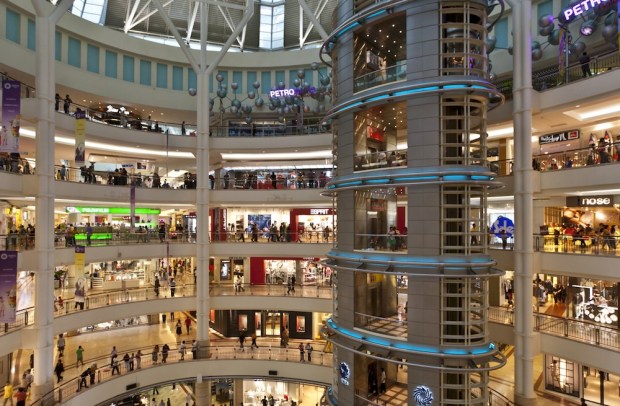Simon Says Mixed Use Is The New Wave Of Retail

With anchor stores like Sears and JCPenney closing more doors than they’re opening, what’s a shopping mall to do? For a growing number of mall owners, the answer is to diversify, filling those gaping department store holes with something completely different: apartments and hotels.
It was a key theme at the International Council of Shopping Centers’ annual RECon convention in Las Vegas this past week, reported CNBC. Some landlords announced new deals for residential uses, while retailers and real estate owners in general seemed to be collaborating more closely to keep shopping centers alive.
“You don’t have to fill retail with retail anymore,” remarked Greg Maloney, head of JLL’s America retail business, at the event. Mixed use is the new wave, and anything is fair game — there’s no such thing as a cookie-cutter solution anymore.
Simon, the major U.S. mall owner, plans to open at least five Marriott International hotels at its properties in the coming years, the company announced during RECon. PREIT, a smaller Northeast competitor, wants to add thousands of residential and hotel units across a dozen properties.
Other mall owners are incorporating fitness operators, spa service providers and entertainment options, noting that “experience” doesn’t have to mean just food — although remodeling outdated food courts does remain a priority for many.
These moves fit neatly with the retail sector’s overall swing toward the experiential. Catering to the demands of millennials and Gen Z, brands are putting more emphasis on values such as authenticity, community and supporting social causes.
What’s more authentic and communal than living, working, shopping and dining all in one place? And what could be more experiential than staying at a hotel that’s got shopping and dining options built in?
But these new strategies are not just about pleasing the next generation of consumers.
Sears is talking about a potential asset sell-off, and JCPenney CEO Marvin Ellison left unexpectedly to take up the reins at Lowe’s. In general, 2018 is on track to break records with the amount of retail real estate going back on the market as failing retailers vacate their claims. Last year saw 105 million square feet of retail space shutter, and 2018 has already seen the closing of more than 90 million square feet.
News like this puts retailers in the undesirable position of playing defense — that is, more than they already might have been as brick-and-mortar retail continues to struggle to recover from the recession.
Fortunately, the outlook is looking significantly less grim than in the recent past. People have stopped talking so much about the “retail apocalypse” except to point out that it isn’t actually happening.
Even in the face of major liquidations like those of Toys R Us and Bon-Ton, noted CNBC, the overall retail mood has brightened since last year’s RECon event. It seems mall landlords and tenants are finally finding their synergy and are getting creative and energized about the potential changes ahead.
Notably, the categories replacing traditional mall anchors all have one thing in common, and it bears a striking contrast to their more traditional predecessors: They’ll be hard for eCommerce to oust.
It’s only logical that a department store selling appliances, bedding, cosmetics and fashion might take a hit as digital commerce gains more and more traction, but you can’t order six-pack abs, a steak dinner and a two-bedroom apartment on Amazon — at least, not yet — so if mall owners can pull this off, they may have a chance to sit back and enjoy their successes in another five to 10 years.
